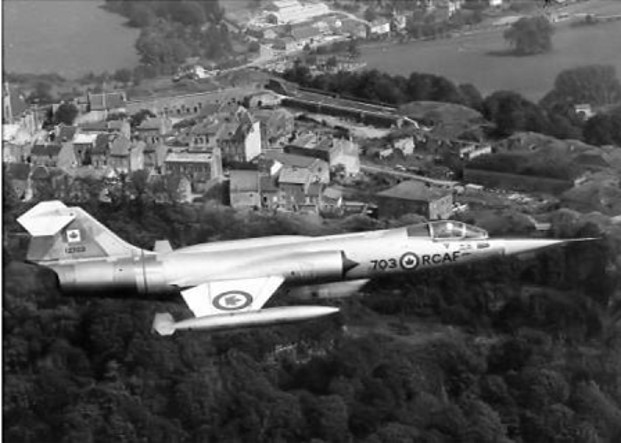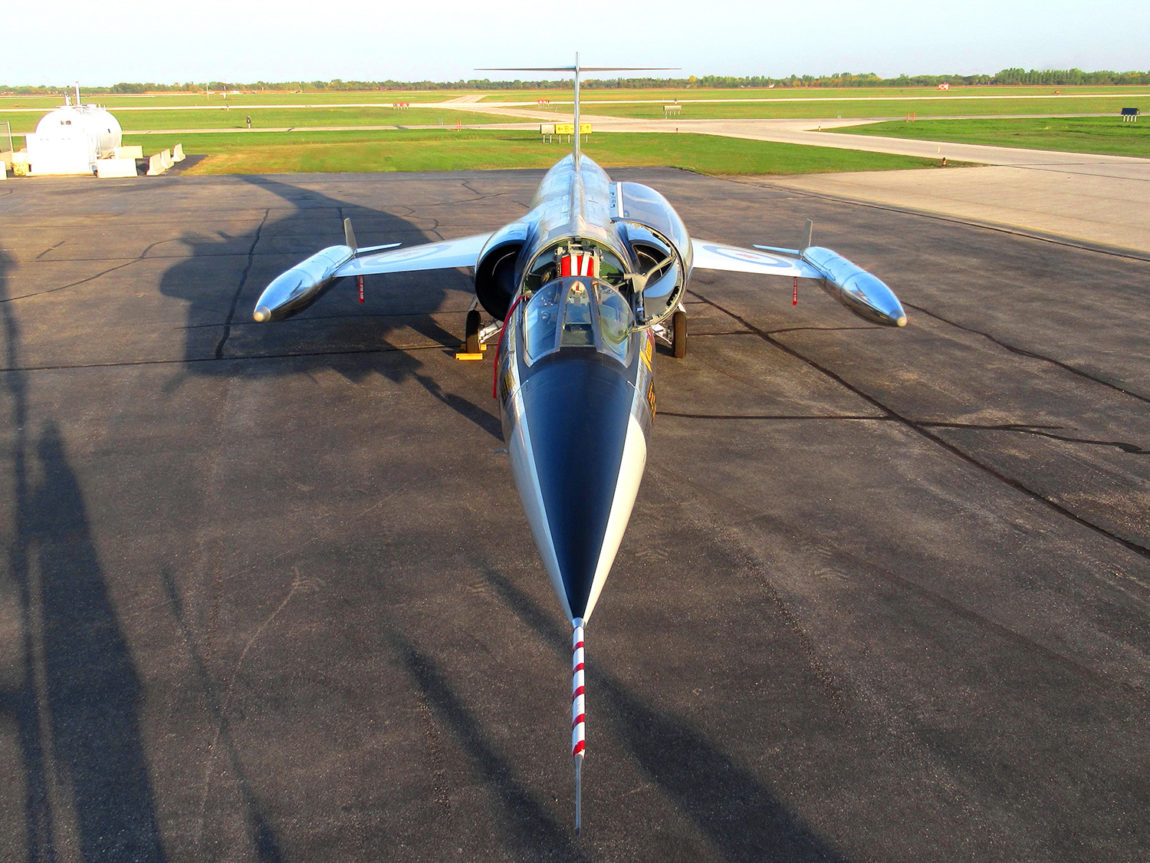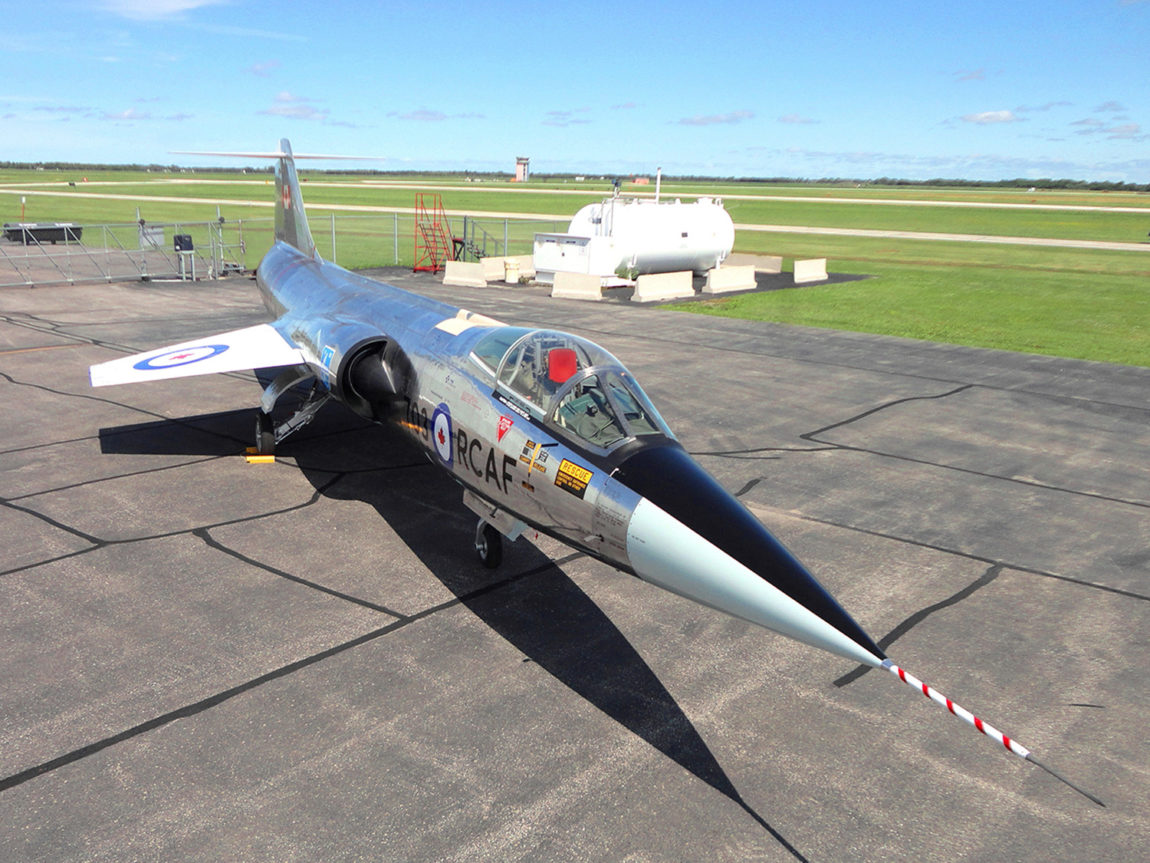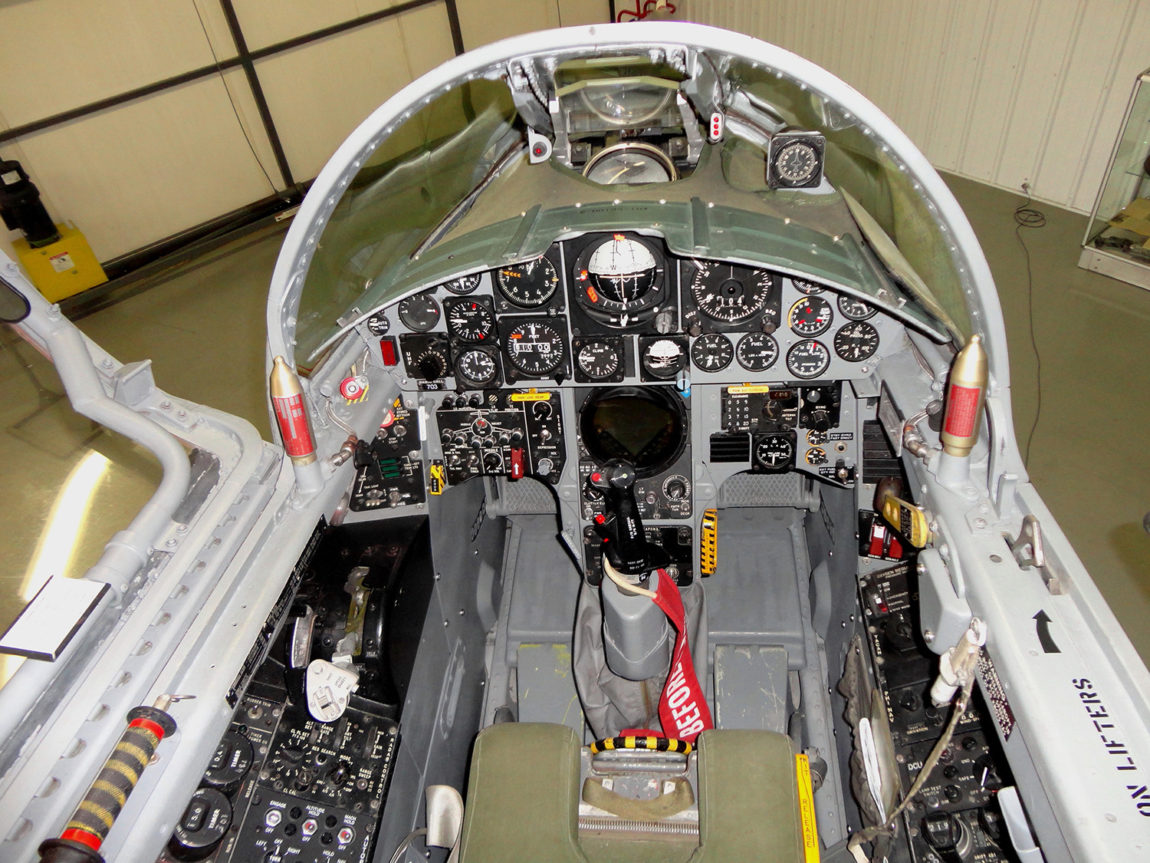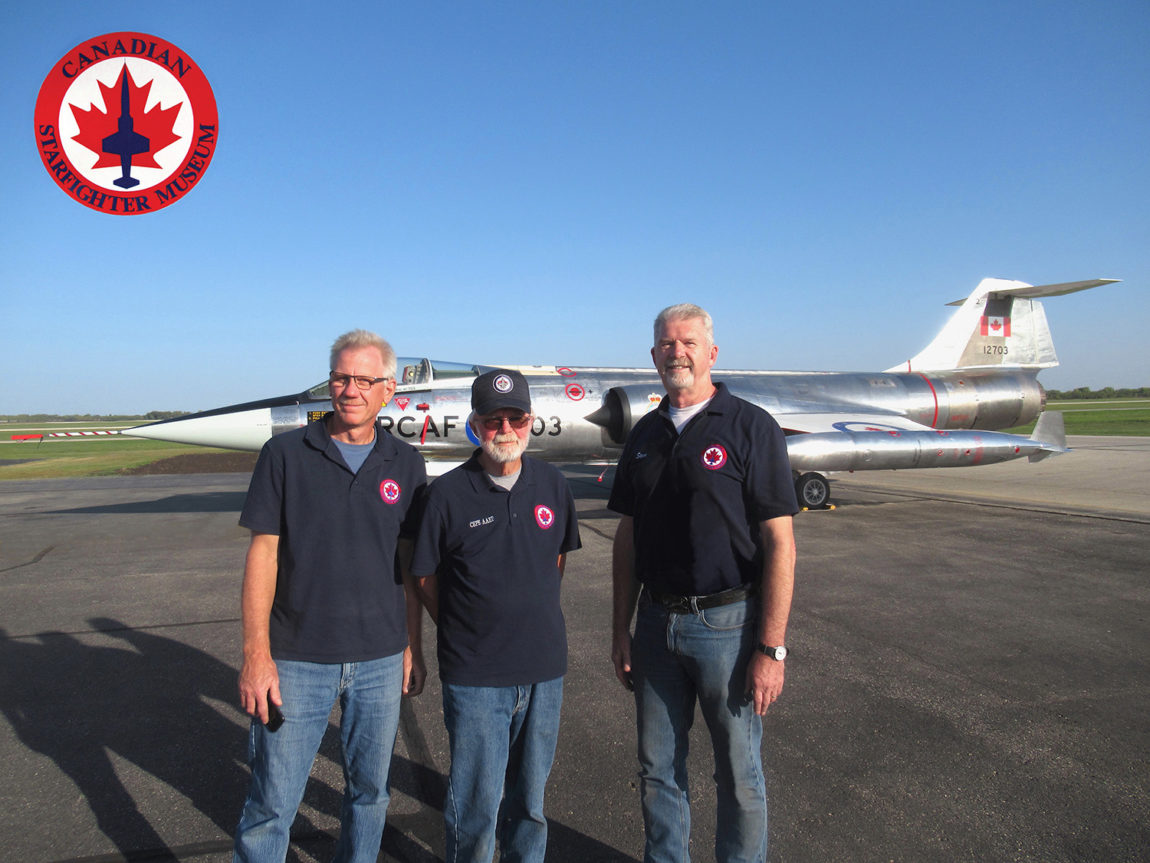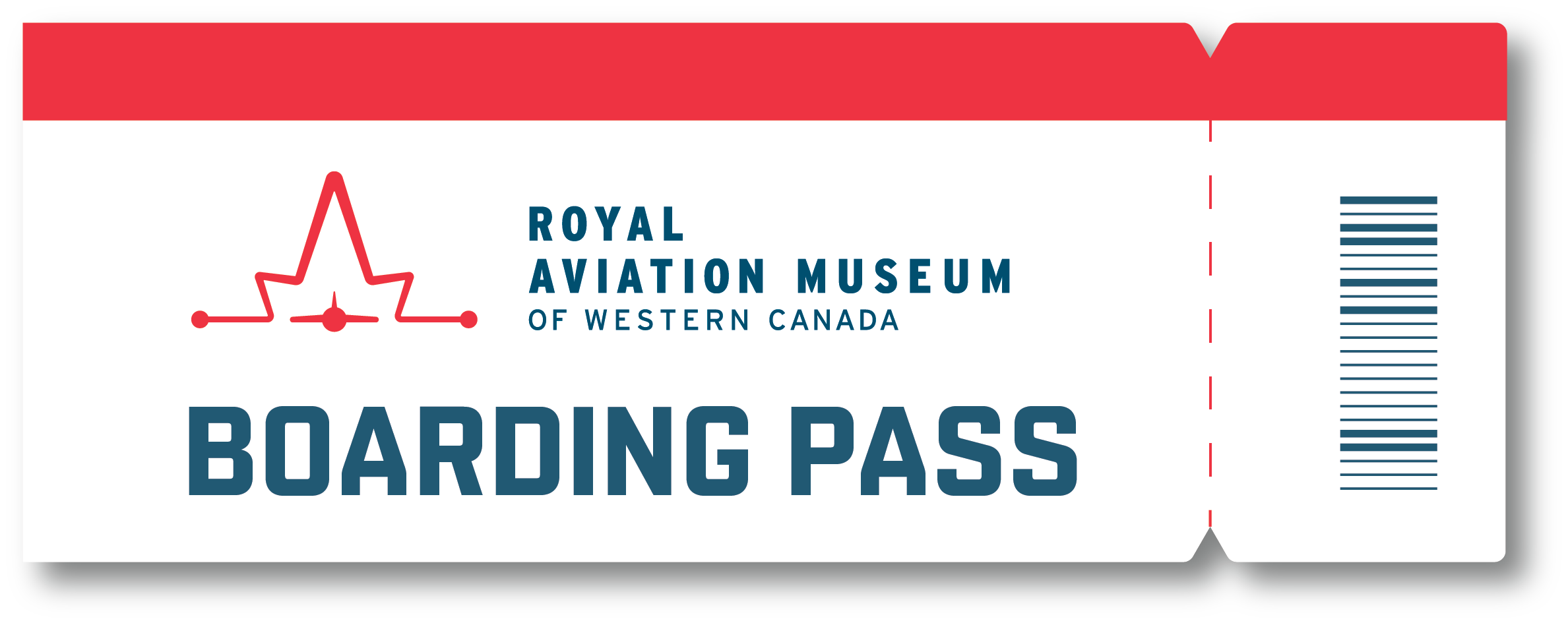The Lockheed F-104 Starfighter is a single-engine, supersonic interceptor developed by Lockheed for the United States Air Force and subsequently produced under licence by U.S. allies worldwide for military purposes.
The Canadair CF-104 Starfighter (CL-90) was a modified version of the Lockheed F-104, built under licence in Canada by Canadair Ltd. at Cartierville, Quebec.
On July 2, 1959, after the cancellation of the Avro Arrow program, the CF-104 was selected by the Royal Canadian Air Force to replace the Sabre Mk.6 for use with its Air Division in Europe. Canadair produced 200 CF-104 Starfighter aircraft for the RCAF to employ within a Nuclear-Strike and Reconnaissance capacity, as Canada’s contribution to international peace-keeping efforts.
The CF-104 Starfighter served NATO for 25 years during the Cold War Era and is one of the most iconic Canadian-manufactured military aircraft. Its Orenda J79-OEL-7 engine was capable of 15,800 pounds of thrust with the afterburner. It was an aircraft built for a nuclear strike, as it could slice through low-level turbulence. The CF-104 Starfighter still is the fastest RCAF aircraft of all time, setting many world altitude and speed records. It is one of the few aircraft in history to have held three world records simultaneously for speed, time to climb, and altitude.
Those who flew the CF-104 Starfighter loved the aircraft, often referring to it as either the “Silver Sliver” or, more commonly, “The Zipper.” In addition, there was an RCAF demonstration team for many years that called themselves the “Deadeye Zips.”
In 1986 the RCAF replaced the CF-104 in the European theatre with the CF-18 Hornet.
The Canadair CF-104 Starfighter 12703 (703) featured within the museum’s Military Skies exhibit has a remarkable history.
On August 14, 1961, it was the first Starfighter to take flight in Canadian airspace.
After this historic flight, in 1962, 703 entered into service with the RCAF, flying missions between Quebec and Cold Lake, AB, until 1963.
In January 1964, the RCAF stationed 703 in a NATO support role in Marville, France.
After nearly a decade in service, in 1972, following cutbacks to Canada’s European peace-keeping commitments, the RCAF sold 22 CF-104 aircraft, including 703, to the Royal Danish Air Force (RDAF) who gave it the new serial number R-704 (since they already had an R-703 in service). For the next 12 years, 703 continued to serve with the RDAF in cold war defence before being withdrawn from service in 1984.
The aircraft’s story doesn’t end there. In 2011, Stephen Pajot, Curator and Operations Manager of the Canadian Starfighter Museum, purchased Starfighter 703. Mr. Pajot’s passion for the CF-104 began in his childhood. His father was in the RCAF. He recalls watching the powerful CF-104 Starfighters shoot down the runways during takeoffs at 4 Wing Baden-Soellingen, Germany, and Canadian Forces Base Cold Lake, Alberta. For Mr. Pajot, a retired Air Canada mechanic and honourary member of 417 Tactical Fighter/Operational Training Squadron based in Cold Lake, Alberta, losing a Canadian historical artefact like CF-104 Starfighter 703 to a scrap heap was an unacceptable option.
Mr. Pajot and his restoration team, composed of Eric Groth, and Al Holmberg, spent seven years meticulously restoring 703 to how it looked in 1966. Members of the Canadian Starfighter Association were major donors and supporters of the restoration of 703.
For the next three years, 703 was the star attraction at Mr. Pajot’s Canadian Starfighter Museum at St. Andrews Airport in St. Andrews, Manitoba.
In 2021, Mr. Pajot made the difficult decision to close the Canadian Starfighter Museum. Determined to find the Starfighter a new home, he secured a loan agreement with RAMWC for the aircraft to become the showpiece of the museum’s Military Skies exhibit for many years to come.
Currently, only ten other CF-104 Starfighters are on display across Canada. Starfighter 703 is the only Starfighter on indoor display in Manitoba.
Starfighter 703 is sponsored by Mr. Jim McManes in honour of the memory of his father Frank McManes.
Inspired to serve his country, in 1941, Frank McManes enlisted in the RCAF and became a flight instructor on the Harvard aircraft a Typhoon combat pilot. During his service, Frank was stationed in many places across Canada and Europe. He retired from the RCAF at the end of the war as a Flight Lieutenant with a Distinguished Flying Cross.
After serving in the RCAF, Frank returned home to Alexander, Manitoba, to raise his family and tend to the farm.
In 1957, after a hail storm devastated his family’s crops, Frank returned to the skies as an instructor with the Brandon Flying Club and Maple Leaf Aviation. His students remembered Frank as an inspirational pilot, very calm and skillful in flight.
The Starfighter exhibit will feature a plaque with Frank’s fascinating life story.

